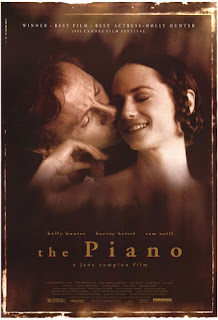September 20th: MIRRORMASK (Dave McKean, 2005)
A young girl from a family of circus performers retreats into a fantasy world when her mother becomes sick.
Neil Gaiman began his career in comics through his association with veteran writer Alan Moore (Watchmen), and created several one-shot graphic novels with illustrator Dave McKean. The two had a major breakout when DC Comics' adult-themed division Vertigo resurrected the character of The Sandman for a new series, with Gaiman quickly becoming one of the most respected writers in the business, accompanied by McKean's striking mixed-media collage cover artwork.
In the wake of The Sandman's success, Gaiman began writing novels (American Gods) and scripts for miniseries television (Neverwhere), while McKean branched out into his own comic writing as well as directing music videos and innovative short films. The Jim Henson Company, looking to create fantasy material in the spirit of their previous classics The Dark Crystal and Labyrinth, approached the two about working together on a new project.
Developing in the story in tandem, material was drawn from McKean's dreams of circus life, and Gaiman using elements from Mark Twain's novel The Prince and the Pauper. The decision was made to set the action in the seaside area of Brighton, known for its colorful inhabitants. McKean's longtime obsession with masks quickly made its way into the story's fantasy section. McKean did most of the conceptual designs for the sets and creatures himself.
The cast is headed by the young Stephanie Leonidas (TV's Defiance), joined by comedian Rob Brydon (The Trip films), Gina McKee (Notting Hill), and Jason Barry (Titanic). All the actors play alternate characters in the fantasy world, requiring extensive blue screen acting.
The film shot on location in Brighton and London for 2 weeks, followed by studio time in preparation for the effects work. McKean drew most of his animating team from recent art school graduates, and attempted to give control of various sequences to specific people in order to draw out their own creative ideas.
While given a relatively small budget of $4 million and originally intended to be a direct-to-video release, the reception at various film festivals led to a small theatrical release. Critical reviews were mixed, with wide praise for the visuals.
Running time is approx. 100 minutes.










Comments
Post a Comment